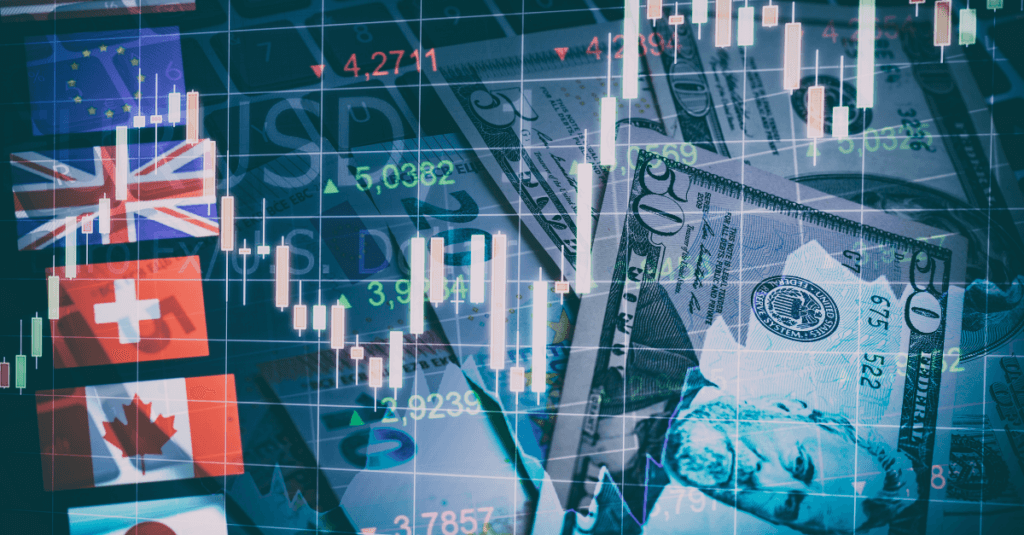You’ve heard about forex. You know it can be highly profitable. You’re interested in learning more, or you’re ready to start currency trading, and you want to know where to begin. Like any intelligent person, you have a lot of questions—and that’s good! Forex can be profitable for individuals who approach it with a sound trading strategy and proper risk management.
Before you get started, take the time to prepare yourself properly. This forex trading for beginners’ guide is designed to help you understand what you need to do if you want to trade currencies for a living – and how to go about it.
What is Forex Trading?
The foreign exchange market, or forex, is a global market for trading currencies. It provides a way for people to buy and sell currency at a mutually agreed price. The forex market is the largest, most liquid market globally, with trillions of dollars changing hands every day. There is no centralized location. Instead, the forex market is an electronic network of banks, brokers, institutions, and individual traders (mostly trading through brokers or banks).
While searching for the cheapest forex broker comes down to a combination of spreads, execution quality, commission, and the minimum deposit. These should be the last points you consider when opening a long-term trading account. For beginners, the best forex broker depends on elements like the trading system, the quote feed, instrument portfolios, execution models, and the leverage offered.
Find the Right Currency Pair
When you first start trading forex, it can be hard to know what currency pair to trade. There are dozens of different currencies you can trade on the forex market, and many traders choose to stick to only one or two pairs as they hone their skills.
It’s important not to try and take on too much when you’re starting out, so picking a currency pair that you have a good understanding of is a great way to begin. Often, major currency pairs have the best liquidity and tightest spreads making them a good option for new traders. These include EUR/USD, USD/JPY, GBP/USD, and USD/CHF.
Understand Leverage and Margin in Forex
Leverage is a loan offered by the broker to the trader. You can use leverage when trading in forex. The main advantage of leverage is getting a much larger position than with your capital alone. For example, if you have $1,000 in your account and use a 1:100 leverage, you can open a position worth up to $100,000 (1% margin required). The disadvantage of using high leverage is that it also increases your risk.
Margin is the amount of collateral to cover any credit risks arising during your trading sessions. The margin amount will vary from broker to broker. It is worth mentioning that margin requirements tend to increase significantly during times of high volatility.
Use a Practice Account
Practice accounts are free and allow you to try trading in a realistic environment without risking your own money. You can trade on the live market, test forex trading strategies, and feel how the whole thing works. This can help a forex trader understand the FX market and practice executing trades using real-time market data.
Most brokers that offer demo accounts allow you to trade with virtual currency in real-time market conditions. Demo accounts are also available through MT4 and MT5 Web Trading platforms and mobile apps, so you can practice trading on your mobile device at any time.
Know When to Buy or Sell
There are many different ways to trade forex. One of the most popular and potentially profitable is a trend following strategy. A trend-following strategy seeks to capitalize on the momentum. By going long or short positions, traders can profit from price movements in either direction. Trends are continuous movements in the markets. They are more likely to continue than the reverse direction. An uptrend is characterized by higher highs and higher lows, while a downtrend has lower highs and lower lows. Trend followers will therefore buy if the market breaks above resistance and sell if it breaks below support. Check out this article on trading strategies.
Fundamental Analysis vs Technical Analysis
Two of the main types of analysis used to study the financial markets and make predictions of future price movements are fundamental and technical analysis.
- Fundamental analysis: This analysis involves studying the economy for factors that may influence currency prices. Fundamental analysts examine everything from interest rates and inflation to political events and economic performance to forecast trends.
- Technical analysis: Technical analysts believe that the historical performance of stocks and markets indicates future performance. They utilize charts and graphs and other technical indicators such as moving averages, support and resistance levels, momentum indicators such as MACD, and oscillators like RSI.
Final Thoughts
We are not saying that forex trading for beginners is simple. It takes time to learn and understand it, but the sky is truly the limit once you do. All you need is discipline, some patience, and dedication. Successful traders have achieved their dreams because they had a plan in mind. They also knew that they had to do whatever it took to make that plan work to get there. Learning how to trade is only the beginning. Trading becomes a skill over time. The more you trade, the more likely you are to succeed.
